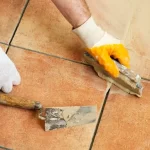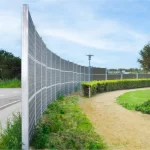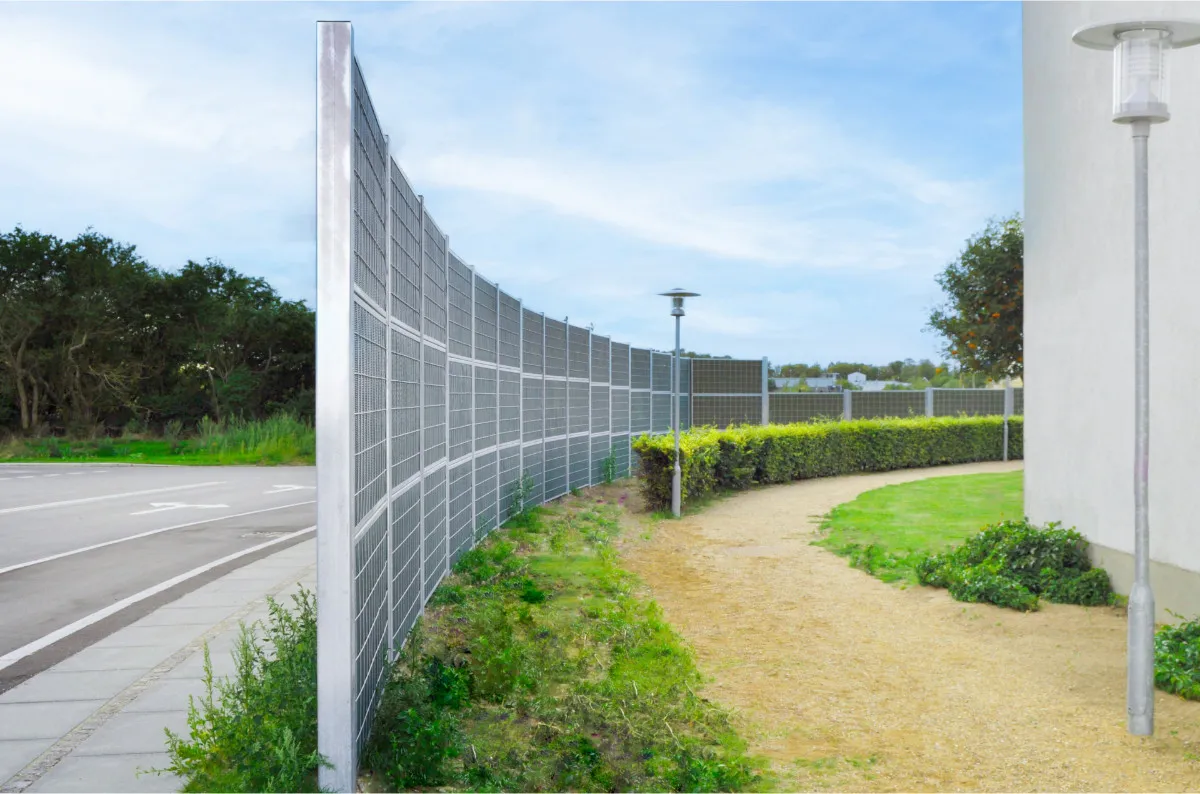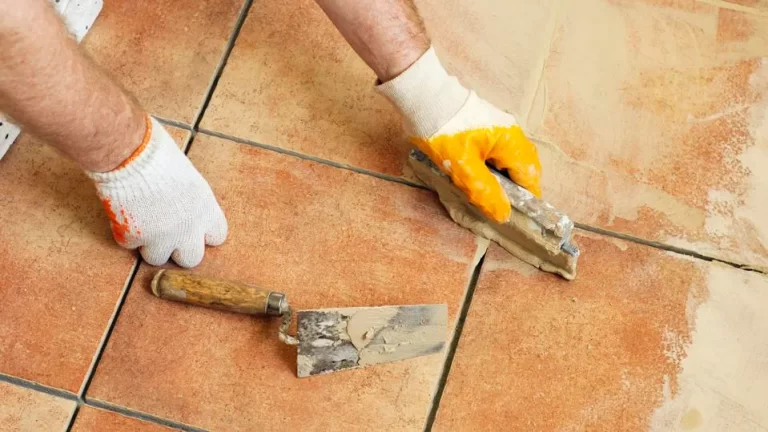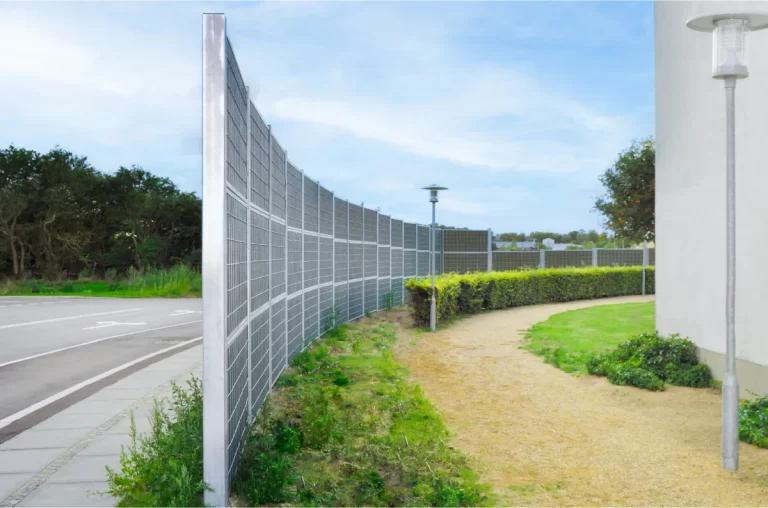Have you ever driven past those towering walls along highways and wondered what they’re for? They’re not just there for decoration—they’re noise barriers, designed to keep the roar of traffic from disrupting nearby homes, schools, and businesses. But what actually goes into building one? It turns out, a lot more than you might think! Let’s break it down in a way that’s easy to understand and, dare we say, interesting!
The Science Behind Noise Barriers
Before we talk about materials and construction, let’s get into the basics: how do noise barriers work? Sound travels in waves, and these waves can be blocked, absorbed, or redirected. A good noise barrier doesn’t just stop sound in its tracks; it carefully controls where it goes.
Some key factors engineers consider include:
- Height: The taller the barrier, the better it can block sound from travelling over it.
- Material: Some materials absorb noise, while others reflect it.
- Shape: A barrier with a curved or angled design can deflect sound waves more effectively than a simple straight wall.
- Location: The closer a barrier is to the noise source, the better it can prevent sound from spreading.
Now that we’ve covered the science, let’s get into what these barriers are actually made of.
Choosing the Right Materials
Not all noise barriers are created equal. Depending on the environment, budget, and aesthetic requirements, different materials are used to construct them. Here are some of the most common ones:
- Concrete: The heavyweight champion of noise barriers, concrete is durable, effective, and great at blocking sound. However, it primarily reflects noise rather than absorbing it.
- Metal: Often used along highways, metal barriers are lightweight and long-lasting. But like concrete, they tend to reflect noise rather than absorb it.
- Wood: Wooden barriers have a more natural look, making them a popular choice in residential areas. They offer moderate noise reduction but require maintenance to prevent rotting.
- Acrylic or Polycarbonate: These transparent barriers are used when preserving scenic views is important. While they don’t absorb much noise, they can still deflect it effectively.
- Recycled Rubber or Composite Materials: These materials are gaining popularity because they offer a balance of sound absorption and environmental sustainability.
- Green Walls: Some noise barriers incorporate living plants, which not only help absorb sound but also improve air quality and aesthetics.
Each material has its own pros and cons, and the choice depends on factors such as cost, maintenance, and effectiveness. While concrete is the most common, eco-friendly alternatives are quickly gaining traction as cities seek more sustainable solutions.
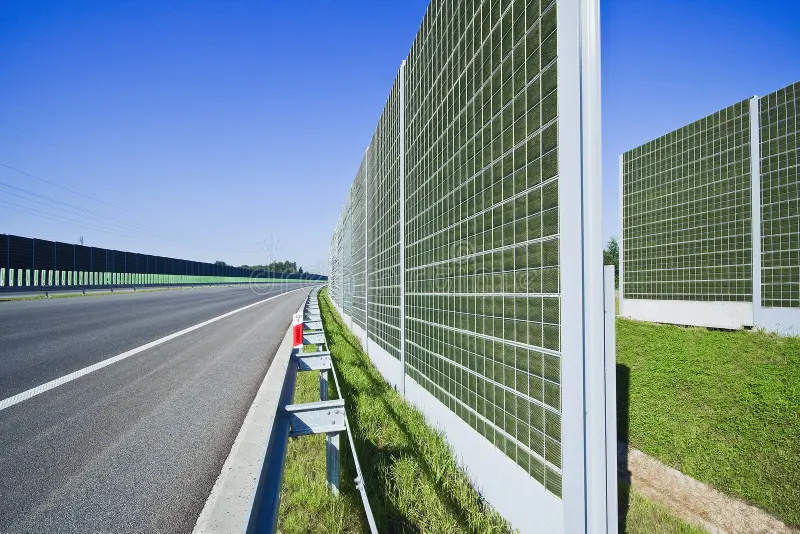
The Construction Process
Once the materials are chosen, it’s time to get building! But constructing a noise barrier isn’t as simple as stacking blocks or putting up a fence. Here’s a step-by-step look at how they’re built:
- Planning & Design
- Engineers analyse traffic patterns, noise levels, and surrounding areas to determine the best placement and height for the barrier.
- Aesthetic considerations are factored in—nobody wants an eyesore towering over their backyard!
- Site Preparation
- The ground is levelled and prepared to ensure a stable foundation.
- In some cases, soil reinforcement is needed to prevent shifting over time.
- Foundation Construction
- Noise barriers need to be sturdy, so deep foundations are often required.
- Steel supports or reinforced concrete bases are installed to hold the barrier in place.
- Panel Installation
- The barrier’s main components (concrete slabs, metal sheets, or other materials) are lifted into place using cranes.
- Each panel is secured tightly to prevent gaps that could let noise through.
- Sealing & Finishing Touches
- Joints between panels are sealed to ensure maximum noise reduction.
- Additional coatings or treatments may be applied for durability and weather resistance.
- In some cases, vegetation is planted to enhance aesthetics and further absorb sound.
Noise barrier construction is a meticulous process that requires careful planning and execution. A poorly constructed barrier can allow sound to leak through gaps or even collapse under harsh weather conditions.
Innovations in Noise Barrier Technology
As cities grow and technology evolves, noise barriers are getting smarter. Here are some of the latest innovations:
- Solar-Powered Noise Barriers: These barriers incorporate solar panels, generating renewable energy while reducing noise pollution.
- Adaptive Barriers: Some modern designs can adjust their structure based on real-time traffic and noise levels.
- 3D-Printed Barriers: Using cutting-edge technology, engineers can create customized barriers that are cost-effective and highly efficient.
- Eco-Friendly Noise Walls: Green barriers covered in vegetation not only absorb sound but also contribute to better air quality and urban cooling.
- Transparent Noise Walls: Advances in polycarbonate materials have made transparent noise barriers more effective, allowing for noise control without blocking scenic views.
As more research goes into noise pollution and urban planning, we can expect even more advanced noise barrier solutions in the future. Cities are beginning to prioritize noise reduction as part of overall sustainability efforts, making innovations like these more relevant than ever.
Final Thoughts
Next time you pass by a noise barrier, take a second to appreciate the engineering and thought that went into it. These structures are more than just big walls—they’re carefully designed solutions that make urban life more comfortable. Whether they’re blocking highway noise, making construction sites more bearable, or preserving the peace in residential areas, noise barriers play a bigger role in our daily lives than we realise. And with new innovations on the horizon, they’re only getting better!

